From Bali to everywhere
Ines Katamso :Three Naga
(b. Indonesia, 1990)
Three Naga (2022)
800 x 550 x 367 cm


Three Naga is a site-specific installation commissioned by Potato Head, created by the French-Javanese artist Ines Katamso and handcrafted by the Balinese weavers Pak Gus Ari and Bali Kui. Combining traditional handmade weaving with contemporary vision, the piece represents a mythological Balinese story of circular regeneration.
A tribute to the cosmic principles of the universe - Three Naga is an abstract form that references a Balinese story of renewal, regeneration, and the importance of balance within 3 key earthly elements.
Three gods were called upon to visit earth, during a time of great environmental cataclysm. The gods took the form of three dragons (Naga), and worked together in order to reclaim, to regenerate, and to bring balance to all things seen and unseen. The three dragons are a description of the principles of the universe that provide prosperity to all creatures in the world, as well as symbolic ties to worldly life that are difficult to break
- Anantabhoga - Representative of Pertiwi, a form of earth soil and stone.
- Basuki - Symbolic of safety and prosperity, the flow of living water. A liquid substance.
- Taksaka - A depiction of the Bayu (air) and atmosphere that sends rain to earth.
Soundscape: Fraktal
Motion-responsive Technology: Helmi Hardian
Commissioned by Curator Pete Pepper Keen & Potato Head






About Ines Katamso
Ines Katamso, born in Yogyakarta describes herself as “anak-campur” or a child of mixed-nationality. Her father, an Indonesian musician, her mother, a French tattoo artist, Ines spent the first ten years of her life in Java, before moving to France where she received her education in art and design. Shortly after graduation Ines then returned to her homeland in order to develop her ever-expanding creative practice first as a muralist followed by the creation of her own Interior design studio.
Starting painting on canvas was a natural process of self criticism. The artist views her decision to move from a large external wall to a scale perhaps more intimate, as an ability to explore a type of internal space from her feelings, away from an anxiety of the outside reality. Each artwork composed of geometric shapes, lines, and organic forms, at first glance may seem whimsical, though they express a much deeper internal process of self-reflection and discovery.











